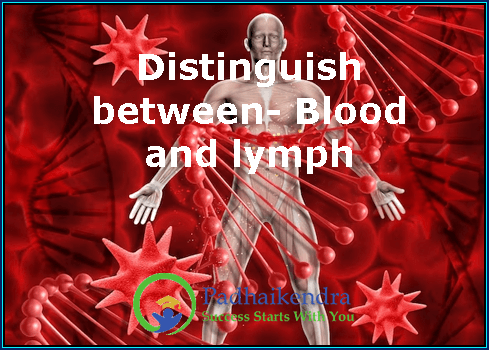Blood and lymph are two different fluids found in the body with distinct functions and characteristics:
- Composition: Blood is a fluid connective tissue composed of plasma, red blood cells, white blood cells, and platelets. Lymph is a colorless fluid composed of lymphocytes, lymphatic fluid, and waste products.
- Function: Blood carries oxygen and nutrients to the body’s cells and removes waste products, while also playing a vital role in the immune system and blood clotting. Lymph helps in removing excess fluids, waste products, and toxins from the body tissues, and plays a crucial role in the immune system.
- Circulation: Blood circulates in the cardiovascular system through the heart, arteries, and veins. Lymph circulates in the lymphatic system, which consists of lymphatic vessels, lymph nodes, and lymphatic organs.
- Color: Blood is red due to the presence of hemoglobin, while lymph is colorless.
- Composition of fluid: Blood has a higher concentration of proteins, electrolytes, and nutrients, while lymph has a higher concentration of lymphocytes.
- Movement: Blood is constantly circulating in the body, while lymph moves more slowly and relies on the muscular contractions of the lymphatic vessels and the body’s movements.
Overall, the main differences between blood and lymph are their composition, function, circulation, color, composition of fluid, and movement.





